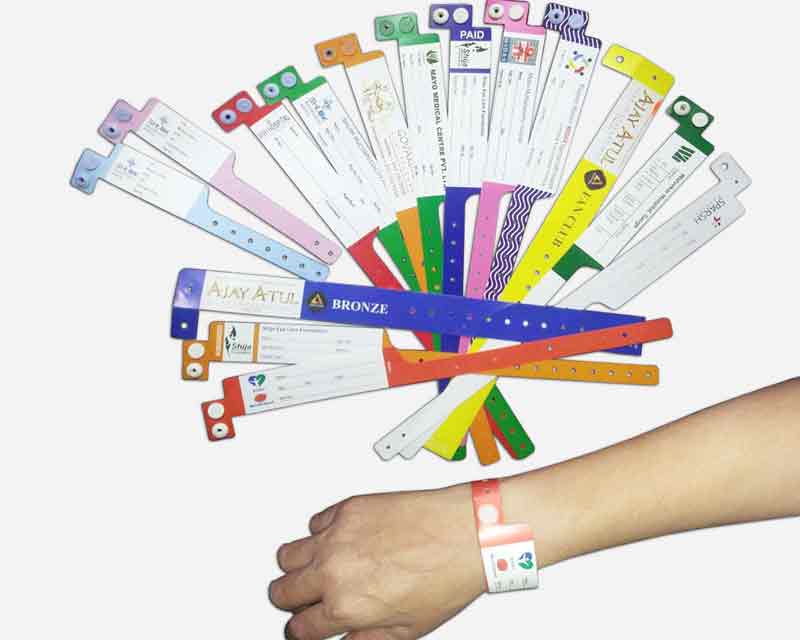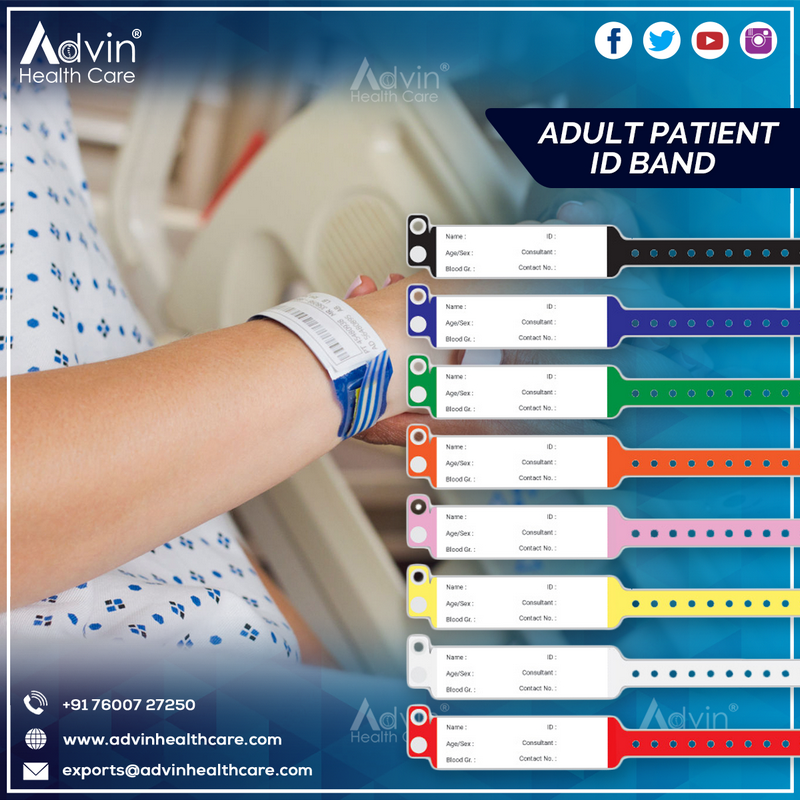Choosing the Right Components for Your Patient Identification Band: A Step-by-Step Guide
Choosing the Right Components for Your Patient Identification Band: A Step-by-Step Guide
Blog Article
Checking Out the Various Kinds Of Patient Identification Band Used in Medical Facilities
In the elaborate world of medical care, the important role of Patient Identification bands usually goes undetected. These bands, varying from straightforward paper wristbands to advanced RFID bands, form the foundation of Patient safety protocols, ensuring accuracy in Patient Identification. The huge diversity of these bands, each with its special benefits and limitations, is typically ignored. As we navigate with this topic, one might get insight right into the refined intricacies and critical relevance of such bands in medical facilities.
Comprehending the Importance of Patient Identification Bands
While they may feel like mere accessories, Patient Identification bands play a vital duty in medical facilities. These bands act as an essential device for validating Patient identification, stopping clinical errors connected to misidentification. The bands normally show essential information such as the Patient's name, age, blood group, and any kind of recognized allergies. They permit healthcare professionals to rapidly access this essential info, consequently promoting precise and prompt clinical therapy. Patient Identification bands also aid in improving management jobs, making sure exact record-keeping and payment. In spite of their simpleness, these bands embody the principle of Patient safety and security, a keystone of quality healthcare. Without them, the risk of medical mistakes, and subsequently, Patient injury, could considerably raise.
Conventional Paper Wristbands: Their Usage and Limitations
Standard paper wristbands have actually been a staple in Patient Identification across numerous medical facilities. While their use prevails, they nurture particular constraints that might impact their performance in Patient management. This area will focus on the extent of their application and the integral disadvantages associated with their usage.
Paper Wristbands: Usage Scope
In the world of Patient Identification, paper wristbands have actually long held a vital function. These bands are generally used in outpatient setups, where the Patient's stay is short-lived. The wristbands consist of vital information such as the Patient's name, date of birth, and a distinct Identification number. This straightforward, yet efficient system, allows doctor to rapidly and accurately recognize clients, ensuring the proper treatment is administered. Paper wristbands are additionally utilized in emergency situations, where quick Identification is vital. Their use reaches events like blood donation drives and mass inoculation programs, additionally emphasizing their versatility. Regardless of innovations in innovation, the humble paper wristband continues to be a trustworthy and economical solution for Patient Identification in various medical care scenarios.
Limitations of Paper Wristbands
Despite their widespread use, paper wristbands are not without their downsides. Their physical toughness is among the significant constraints. Direct exposure to water, sweat, or misuse can render them unreadable and even trigger them to break down. Additionally, paper wristbands typically lack the technical capabilities of even more modern-day options, such as barcoding or RFID chips, limiting their functionality to just showing composed details. The lack of ability to upgrade or modify the data on the wristband is an additional drawback. If the info is handwritten, readability can be jeopardized, leading to prospective misidentification. Finally, paper wristbands can cause pain or skin inflammation to some clients, especially when put on for extensive durations.
Barcoded Wristbands: Improvements in Patient Identification
While Patient Identification has long been a vital facet of healthcare, the introduction of barcoded wristbands symbolizes a substantial jump onward. These bands utilize the simpleness of barcoding modern technology, permitting for Patient details to be promptly checked and accessed. They boost the rate and precision of Patient Identification, minimizing the danger of clinical mistakes associated to misidentification.
Radio Regularity Identification (RFID) Bands: a Step In The Direction Of Futuristic Healthcare
The advancement of Patient Identification bands has produced the appearance of Radio Regularity Identification (RFID) Bands (patient identification band). These ingenious gadgets present essential benefits for medical care centers, supplying an extra efficient and technically progressed means of Patient Identification. The application of RFID in health care is a significant action in the direction of a more futuristic method to Patient monitoring and security
Understanding RFID Bands

RFID Bands: Secret Benefits
Welcoming a future where modern technology and medical care combine, superhigh frequency Identification bands offer a number of vital benefits. Largely, these bands improve Patient safety and security by giving precise, immediate Identification, thereby lowering clinical mistakes. RFID bands can store a vast quantity of Patient data, consisting of case history and allergies, allowing customized care. They likewise enhance management jobs, as the automated information entry changes hand-operated processes, enhancing efficiency and lowering documents. RFID bands provide real-time monitoring of people, crucial in high-risk atmospheres such as surgical procedure or extensive care. Lastly, these bands are sturdy and immune to ecological factors, guaranteeing constant performance. Generally, RFID bands represent a substantial improvement in Patient Identification modern technology, profiting both patients and healthcare service providers.
Applying RFID in Health Care
As we enter a technologically sophisticated age, the implementation of RFID bands in health care comes to be increasingly crucial. These bands supply a seamless method to track and determine patients, guaranteeing their safety and security and enhancing effectiveness in treatment procedures. RFID bands offer countless benefits over traditional Identification approaches. They can save a vast amount of data, including the Patient's case history and treatment plans, which can be quickly accessed by doctor. This information helps physicians make informed choices pertaining to the Patient's therapy strategy. RFID bands lower clinical errors by giving precise Patient Identification, which is essential in preventing misdiagnosis or incorrect medication management. Therefore, the implementation of RFID bands is a substantial step towards boosting Patient safety and health care delivery.

Color-Coded Wristbands: Aiding in Quick and Accurate Diagnosis
In the dynamic setting of a clinical facility, color-coded wristbands have arised as essential devices for swift and accurate Identification of additional reading a patient's medical condition. These wristbands, worn by people, carry specific shades that match to various medical conditions or standings. For circumstances, red can indicate allergy threats, while yellow could represent a a fantastic read fall danger. This system is created to offer immediate aesthetic cues to doctor, boosting Patient safety and security and care quality. In emergency situation situations, making use of these wristbands permits fast decision-making. However, the efficiency of color-coded wristbands depends on the harmony of shade interpretation throughout healthcare establishments, needing usual standards for regular application.
Techniques for Efficient Execution and Monitoring of Patient ID Bands
Achieving ideal use Patient Identification bands demands a well-structured approach for their execution and management. The initial step entails training all health workers on the relevance of correctly applying and checking out these bands. Second of all, healthcare facilities need to standardize using ID bands across all departments, making sure harmony and lowering discrepancies. Routine audits should be conducted to validate adherence to plans and to remedy any kind of variances. Patient education is also crucial; clients should understand the objective of the bands and the demand for their consistent wear. patient identification band. Finally, it's vital to have a backup plan in position, such as barcode scanning or biometrics, to make certain that Patient Identification is never ever endangered.
Verdict
Patient Identification bands are important in medical centers to ensure security and precision. Conventional paper, barcoded, RFID, and color-coded wristbands each hold one-of-a-kind advantages, varying from cost-effectiveness to advanced data storage space and instant medical signals. Effective application and monitoring of these bands can dramatically decrease clinical mistakes, boost effectiveness, and boost overall Patient care. Hence, understanding and making use of these Identification tools is vital for keeping high standards in health care.
These bands, differing from simple paper wristbands to advanced RFID bands, develop the backbone of Patient security procedures, making certain accuracy in Patient Identification.The evolution of Patient Identification bands has brought regarding the introduction of Radio Regularity Identification (RFID) Bands. In general, RFID bands represent a substantial innovation in Patient Identification modern technology, profiting both people and healthcare suppliers.
RFID bands lower clinical mistakes by providing accurate Patient Identification, which is essential in stopping misdiagnosis or incorrect medicine management. Patient education and learning is also important; people must comprehend the function of the bands and the demand for their constant wear.
Report this page